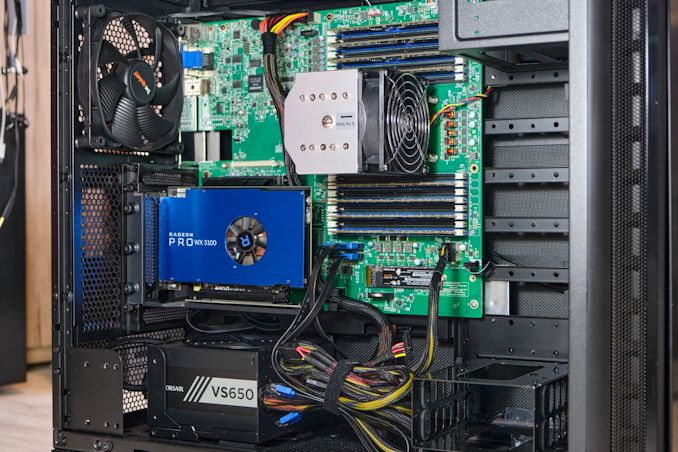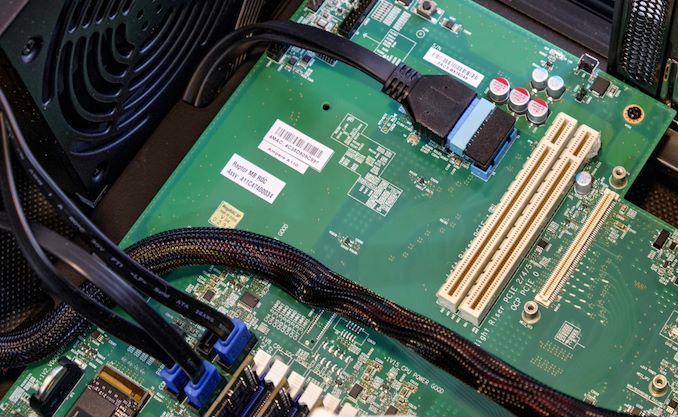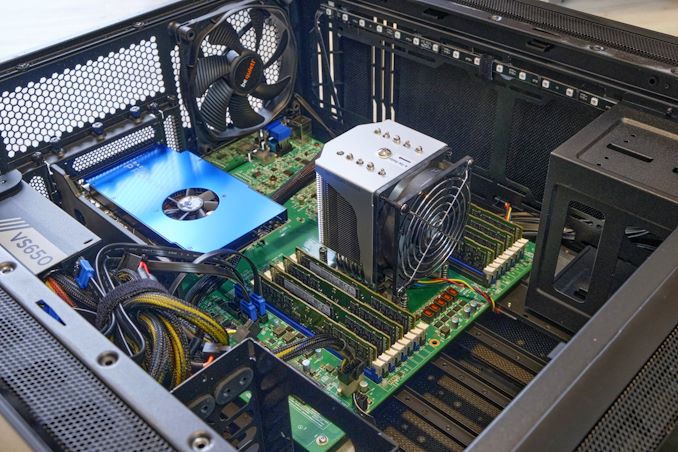Avantek's Arm Workstation: Ampere eMAG 8180 32-core Arm64 Review
by Andrei Frumusanu on May 22, 2020 8:00 AM EST
Arm desktop systems are quite a rarity. In fact, it’s quite an issue for the general Arm software ecosystem in terms of having appropriate hardware for developers to actually start working in earnest on more optimised Arm software.
To date, the solution to this has mostly been using cloud instances of various Arm server hardware – it can be a legitimate option and new powerful cloud instances such as Amazon’s Graviton2 certainly offer the flexibility and performance you’d need to get things rolling.
However, if you actually wanted a private local and physical system, you’d mostly be relegated to small low-performing single-board computers which most of the time had patchy software support. It’s only been in the last year or two where Arm-based laptops with Qualcomm Snapdragon chips have suddenly become a viable developer platform thanks to WSL on Windows.
For somebody who wants a bit more power and in particular is looking to make use of peripherals – actively using large amounts of storage or PCIe connectivity, then there’s options such as Avantek’s eMag Workstation system.
The system is an interesting mish-mash of desktop and server hardware, and at the centre of it all enabling is Ampere’s “Raptor” motherboard containing the eMAG 8180 32-core chip. This is a server development board that doesn’t really adhere to any standard form-factor standard, but Avantek was able to make it fit into BeQuiet tower chassis with some modifications.
Ian had published a more in-depth visual inspection of the machine a few weeks ago, so I recommend reading that in terms of the analysis of what’s physically present in the machine and its quirks.
Read: Arm Development For The Office: Unboxing an Ampere eMag Workstation
The notable characteristics of the system is that in fact it’s a setup that was designed by a vendor that’s usually server oriented – this is Avantek’s first foray into a desktop system.
As noted, because the motherboard isn’t adhering to an ATX standard, the biggest incompatibility lies on the part of the PCIe slots which don’t match up with the slots of the chassis. Avantek here had to resort to using a riser card and a custom backplate in order to fit the graphics card.
The graphics card provided in our sample was a Radeon Pro WX5100 – a lower-end unit meant for workstations.
The biggest advantage of the system which we’ll address in more detail in a bit, is the fact that this is an SBSA (Server Base System Architecture) compliant system, which means it’ll be compatible with “most” PCIe hardware out there. For example, I had no issues replacing the graphics card with an older Radeon HD 7950 I had lying around and the system booted with display output without any issues. This might sound extremely boring, and it is – but for the Arm ecosystem it’s been a decade long journey to reach this point.
In terms of general form-factor, Avantek’s choice here to go with a desktop chassis works well. It’s a big motherboard so it does require a bigger case, allowing it for plenty of additional hardware inside.
I think one negative on the system from a practical hardware perspective is Avantek’s server pedigree. The CPU cooler in particular is the type you’d find in a server system, and the fan choice isn’t something you’d see in any traditional desktop system as it's a more robust 90mm fan. Although the company has said that it tried to minimise the noise of the system by adjusting the fan curves as well as opting for a low acoustics chassis – it’s still subjectively loud for a desktop system. I measured around 42dBA at idle which is still a bit much - but that also depends on your typical expectations of a silent system. I hope Avantek would change in the future is employ a more consumer grade CPU cooler system and reduce the acoustics of the machine.















35 Comments
View All Comments
mode_13h - Sunday, May 24, 2020 - link
Heh, yeah. Hopefully, just a typo.mode_13h - Sunday, May 24, 2020 - link
Cool review. Thanks.If you'd asked me 5-7 years ago, I thought I'd already be running an ARM-based server or workstation, by now. Maybe I was off by a few years?
Anyway, I think we'll look back on this as a milestone. It's not the very first ARM-based workstation I've seen (for that, check out https://www.phoronix.com/scan.php?page=article&... ), but certainly the most compelling.
KAlmquist - Monday, May 25, 2020 - link
Linking is, in principle, pretty parallelizable. Static libraries are a problem for parallel linking because you have to know which symbols are referenced but not defined by files preceding the library before you can determine which object files in the library are needed, but these days people use shared libraries instead of static libraries. Generating the memory layout is a single threaded operation, but a quick one.There are a lot of companies that would benefit from the existence of a parallelized linker. Avantek would have a more compelling product. Any company that does lots of software development would benefit from shorter build times. So I expect that eventually someone will fund the development of such a linker.
schm121 - Tuesday, May 26, 2020 - link
We always enjoy your articles its inspired a lot by reading your articles day by day. So please accept my thanks and congrats for success of your latest series.https://www.schmhyd.edu.in/
futurepastnow - Thursday, June 11, 2020 - link
The next Mac Pro?